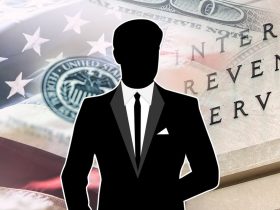The Biden administration has launched a new initiative that will allow borrowers to “buy back” credit toward student loan forgiveness under a key federal program for public servants. The launch follows the implementation of new loan forgiveness regulations that went into effect this summer.
Here’s what borrowers need to know.
Buyback Option Under New Student Loan Forgiveness Rules
The initiative is part of the Public Service Loan Forgiveness program, which allows borrowers working in qualifying nonprofit or government employment to receive student loan forgiveness after 120 qualifying payments, the equivalent of 10 years.
Under PSLF rules, generally only time spent in repayment under either the 10-year Standard plan or an income-driven repayment plan can count toward student loan forgiveness. Time spent in other repayment plans may not count. And time spent in most kinds of deferment and forbearance would not count, either.
The Education Department enacted new regulations on July 1 that expand access to PSLF. The new rules relax some of the requirements defining a “qualifying payment” for PSLF, and allow certain additional periods of deferment and forbearance to count toward student loan forgiveness under limited circumstances.
The new regulations also provide for a “hold harmless” option. According to an Education Department fact sheet released last year in advance of the new rules, this would allow borrowers “to have other periods of deferment and forbearance potentially counted toward PSLF if they make payments equivalent to what they would have owed at the time.” But although the new regulations went into effect on July 1, until now, the department had not released any details outlining how this feature would work.
Biden Administration Releases Guidance On New Student Loan Forgiveness Buyback Option
This week, the Biden administration released detailed new guidance on the hold harmless feature, which the Education Department is calling a “buyback” option.
“Due to recent changes in PSLF regulation, you can now buy back certain months in your payment history to make them qualifying payments for PSLF,” says the department. “Specifically, you can buy back months that don’t count as qualifying payments because you were in an ineligible deferment or forbearance status.”
According to the guidance, to be eligible for the buyback option borrowers must still have an outstanding Direct federal student loan balance, and they must already have 120 months of qualifying PSLF employment such that buying back months of non-qualifying periods of deferment and forbearance would result in receiving student loan forgiveness.
The cost of the buyback to the borrower will be based on the borrower’s income and family size for the period in question using an IDR formula. “You must make an extra payment of at least as much as what you would have made under an income-driven repayment (IDR) plan during the months you’re trying to buy back,” says the department. “The amount required will be based on your income and family size at the time of the deferment or forbearance, not your current income and family size.” That means borrowers will have to supply income documentation from that time period.
There are several restrictions on the feature, as well. Borrowers who have less than 120 certified months of qualifying PSLF employment aren’t eligible. Any periods prior to Direct loan consolidation can’t be bought back. In-school periods, post-graduation grace periods, and periods of default and bankruptcy all are excluded from the buyback option. Only other kinds of deferment and forbearance are potentially eligible.
How To Apply For Student Loan Forgiveness Buyback
Notably, the buyback feature is less generous than another Biden administration initiative called the IDR Account Adjustment. Under this temporary program, borrowers can receive student loan forgiveness credit toward PSLF for many prior periods of deferment and forbearance, including periods prior to consolidation and other past periods that may not be eligible for buyback under the new rules.
“Before submitting a PSLF buyback request, we strongly encourage you to wait until accounts are updated through the payment count adjustment,” cautions the Education Department in its new guidance. “If you’ve already submitted a PSLF form and have approved qualifying employment, you may see updates beginning this fall. This includes PSLF credit for months of eligible deferment or forbearance at no added cost to you.”
The Education Department is already implementing relief under the IDR Account Adjustment, and hundreds of thousands of borrowers have already received student loan forgiveness through PSLF as a result of this temporary initiative. The IDR Account Adjustment’s implementation should conclude sometime next year.
After that, borrowers can submit a buyback request through the PSLF Reconsideration portal. “Include the following in your PSLF reconsideration request for buyback,” instructs the department: “I have at least 120 months of approved qualifying employment, and I am seeking PSLF or TEPSLF discharge through PSLF buyback. Please assess my eligibility for PSLF buyback.”
Further Student Loan Forgiveness Reading
Student Loan Forgiveness And Repayment Plans At Major Risk As Problems Worsen
Biden’s New Student Loan Forgiveness Plan Starts To Take Shape
‘A Big Deal’: Student Loan Forgiveness Approved For 3.6 Million Borrowers
Student Loan Forgiveness Proceeds And Payments ‘Cut In Half,’ But System Buckles
Read the full article here












Leave a Reply